As winter approaches, vehicle owners look for effective ways to protect their cars from the harsh elements. One solution that comes to mind is the use of Arrow Carports. So, can you use an arrow carport in the winter?
Known for their durability and versatility, Arrow Carports have become a popular choice for vehicle protection. This article delves into the suitability and adaptability of Arrow Carports for winter use.
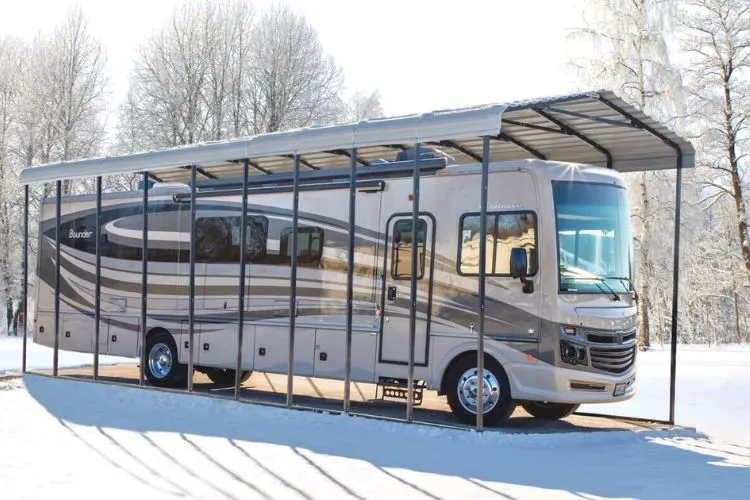
Contents
- 1 Understanding Arrow Carports
- 2 Can You Use an Arrow Carport in the Winter?
- 3 Preparing Your Arrow Carport for Winter
- 4 Tips for Maximizing Winter Use
- 5 Installation Considerations
- 6 Understanding Snow Load Ratings
- 7 Ventilation and Condensation Prevention
- 8 Frequently Asked Questions (FAQs)
- 8.1 Can heavy snowfall damage an Arrow Carport?
- 8.2 How do I prevent my Arrow Carport from rusting in winter conditions?
- 8.3 Are there special winter accessories for Arrow Carports?
- 8.4 Can I install a heating element in my Arrow Carport?
- 8.5 What is the best way to reinforce an Arrow Carport for winter?
Understanding Arrow Carports
Construction and Materials
Arrow Carports are designed with durability in mind. Made from high-quality galvanized steel, these carports are built to last. The materials used in their construction offer resistance to rust and corrosion, which are common concerns in winter weather.

The strength of the steel also ensures that the carport can withstand heavy loads, such as snow accumulation on the roof.
Design Features
The design of Arrow Carports is geared towards providing maximum protection against the elements. The roof is engineered to facilitate snow and rain runoff, reducing the risk of water damage or snow accumulation.
Optional side panels can be added for extra shelter from winter winds and snowdrifts, making these carports a versatile solution for vehicle protection.
Can You Use an Arrow Carport in the Winter?
Weather Challenges
Winter brings a set of challenges, including snow, ice, and wind. These elements can be damaging to vehicles left exposed to the elements.
Arrow Carports are designed to withstand such conditions. The structural integrity of these carports ensures they remain stable and functional even in harsh winter weather.
Benefits of Using an Arrow Carport in Winter
Using an Arrow Carport in the winter offers several benefits. It protects vehicles from snow and ice, reducing the need for time-consuming defrosting and snow removal.
The carport also acts as a barrier against winter debris and ice falls, which can cause damage to vehicles.
Preparing Your Arrow Carport for Winter
Inspection and Maintenance
Before winter sets in, it is crucial to inspect your Arrow Carport for any signs of wear or damage.
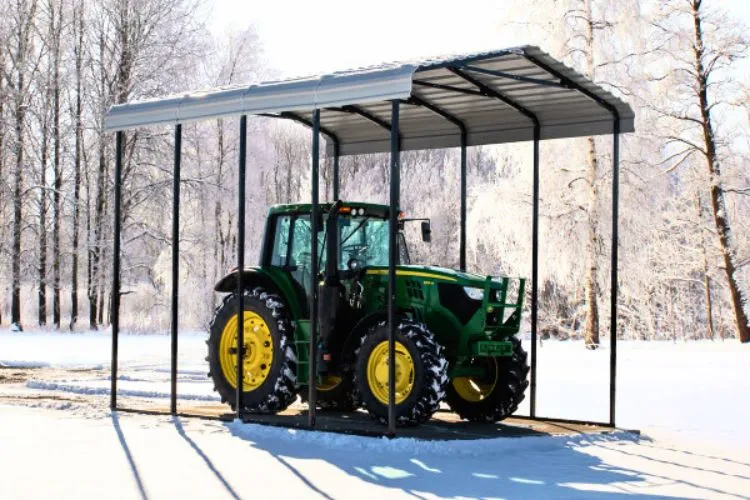
Checking for loose bolts and signs of corrosion can help prevent issues during the winter months. Regular maintenance ensures the carport remains in good condition, ready to withstand winter weather.
Enhancements for Winter Protection
For added protection, consider installing side panels or enclosures. These additions can provide extra shelter for your vehicle.
If you live in an area with high winds, securing your carport with weighted anchors or foundation attachments is advisable. These measures enhance the stability of the carport against winter winds.
Tips for Maximizing Winter Use
Efficient Snow and Ice Management
Effective snow and ice management on your Arrow Carport is essential. Regularly removing snow from the roof prevents excessive accumulation, which can put strain on the structure. When de-icing, choose products that are safe for the carport’s materials to avoid damage.
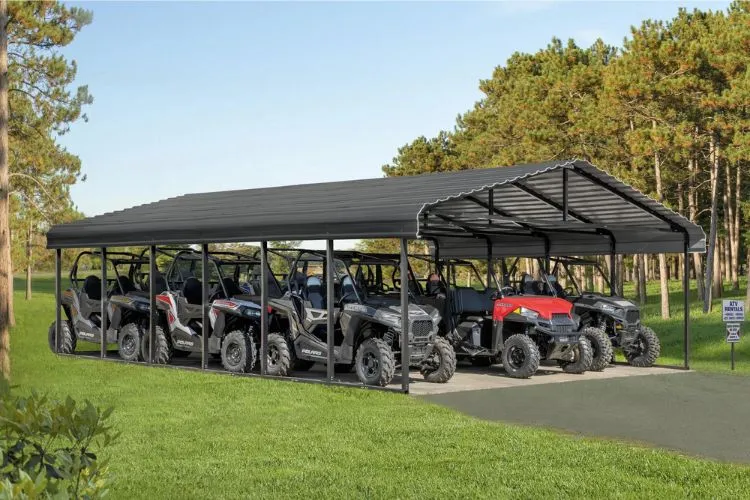
Vehicle Protection Tips
Apart from the protection provided by the carport, using a car cover can offer additional defense against the elements. Placing protective barriers around the carport’s perimeter can also shield your vehicle from winter debris.
Installation Considerations
Choosing the Right Location
When installing your Arrow Carport, select a location that minimizes exposure to snow drifts and prevailing winds. This strategic placement can enhance the effectiveness of the carport’s protection.
Professional vs. DIY Installation
Deciding between professional installation and DIY depends on your comfort level and experience. While DIY installation can be cost-effective, professional installation ensures the carport is set up correctly, potentially offering better resilience against winter conditions.
You may also like: How To Keep Your Gazebo Warm During Colder Weather?
Understanding Snow Load Ratings
A key consideration when preparing your Arrow Carport for winter is the snow load rating—essentially the maximum amount of snow weight the structure can support.
Different models are engineered to handle varying loads, which are usually measured in pounds per square foot (psf). Knowing your carport’s snow load rating is crucial, as exceeding this limit can lead to structural damage or collapse.
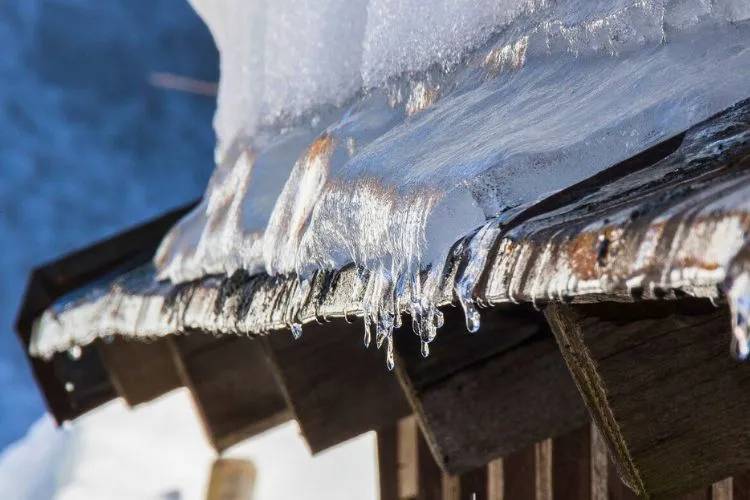
For instance, carports installed in regions prone to heavy snowfall should ideally possess a higher snow load rating to accommodate the increased weight.
Before winter begins, assess the expected snowfall in your area and confirm that your chosen model aligns with these conditions.
If necessary, explore reinforcement options to increase your carport’s weight capacity. This proactive approach plays a vital role in ensuring the longevity and safety of your vehicle’s winter shelter.
Ventilation and Condensation Prevention
Proper ventilation is a critical aspect of maintaining an Arrow Carport during the winter months. Insufficient airflow can result in condensation as warm air meets the cold surfaces underneath the carport, potentially leading to water accumulation.
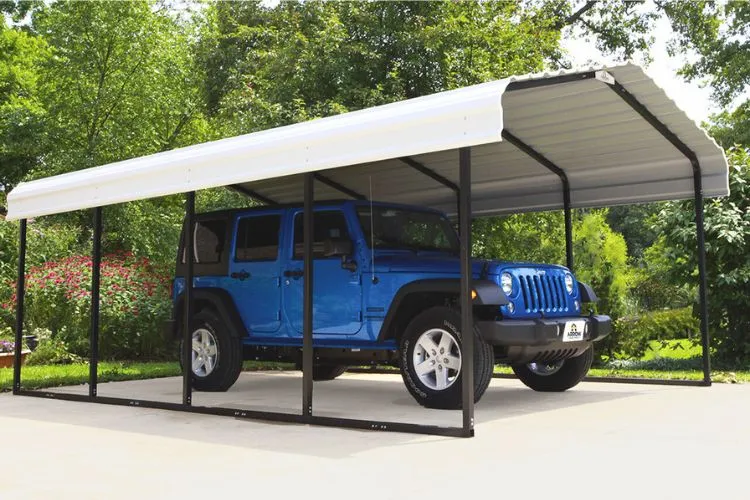
Over time, this moisture can pave the way for ice formation, which poses risks to both the vehicle and the structural integrity of the carport.
Ensuring adequate ventilation helps keep the air moving and reduces the likelihood of condensation.
Implementing measures such as strategic placement of vents or slight modifications to allow for better air circulation can significantly mitigate these risks, safeguarding your vehicle and carport from moisture-related damage.
Frequently Asked Questions (FAQs)
Can heavy snowfall damage an Arrow Carport?
With proper installation and maintenance, Arrow Carports can withstand typical snowfall. However, excessive snow accumulation should be avoided by regular removal.
How do I prevent my Arrow Carport from rusting in winter conditions?
Regular maintenance, including inspecting for and addressing signs of corrosion, helps prevent rust. Using covers and keeping the carport clean also contributes to rust prevention.
Are there special winter accessories for Arrow Carports?
Yes, Arrow offers various accessories, such as side panels and anchors, which can enhance the carport’s winter protection capabilities.
Can I install a heating element in my Arrow Carport?
Installing a heating element should be done with caution and by following all safety guidelines. It is essential to ensure that any heating solution is safe for use with the carport’s materials.
What is the best way to reinforce an Arrow Carport for winter?
Adding side panels, using weighted anchors, and ensuring the carport is correctly installed are effective ways to reinforce it for winter use.
Conclusion:
Arrow Carports are a viable option for protecting your vehicle in the winter. With their sturdy construction and design features, these carports can withstand the challenges of winter weather.
By preparing your carport for winter and following maintenance tips, you can ensure your vehicle remains protected against the elements. Arrow Carports offer a practical and versatile solution for year-round vehicle protection, making them an excellent investment for any vehicle owner.

Sergio Gomes, a passionate advocate for outdoor living and the male voice behind Shades Authority. With years of experience, Sergio is your trusted source for expert insights on gazebos, pavilions, cabanas, pergolas, and all things outdoor shade solutions. Join him on a journey to transform your outdoor spaces into stunning, functional retreats
